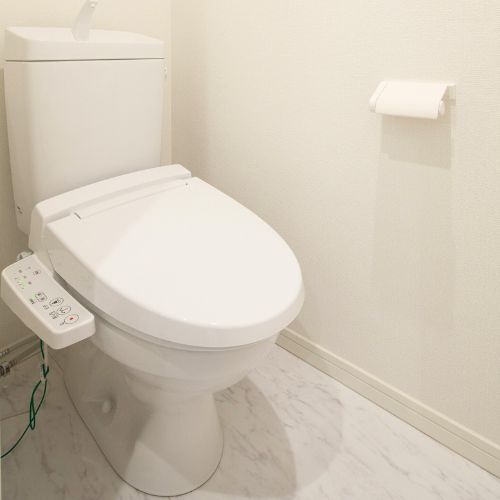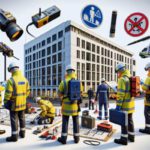Essential Considerations for Wollongong and Illawarra Homeowners Regarding Backflow Prevention Strategies
Grasping the Significance of Backflow Prevention for Bidets Throughout Australia
When contemplating the addition of a cutting-edge modern bidet seat, it may appear as a luxurious bathroom enhancement, yet it is crucial to consider a significant factor: the critical need for backflow prevention.
In essence, backflow prevention encompasses vital safety protocols designed to avert the reverse flow of contaminated water or potential pollutants into your clean water source. Homes equipped with bidets, especially those connected to the toilet water supply line, face increased risks as noted by regulatory bodies. Therefore, in NSW, any installations must undergo thorough hazard evaluations and implement suitable backflow protection devices. For more details, you can check the NSW guidelines here.
Neglecting to install a bidet with the necessary protective measures is not just a compliance issue; it poses a severe threat to your drinking water safety, particularly since bidets are often situated in areas that require strict hygiene standards.

What Are the Main Causes of Backflow? A Detailed Examination of Back‑siphonage and Back‑pressure Dynamics
- Back‑siphonage: Picture a sudden drop in pressure within the street water main, potentially triggered by a water main break or significant consumption due to firefighting efforts. This abrupt pressure decline can create a vacuum effect that draws contaminated water from fixtures like bidets back into the drinking water supply, presenting a serious health hazard.
- Back‑pressure: Conversely, if the pressure within your home surpasses that of the water supply—due to elements such as a booster pump or thermal expansion—it can force water back into the main line.
Both of these mechanisms pose a substantial danger, facilitating the intrusion of contaminated water into your home’s potable water system, making it absolutely imperative to establish effective backflow prevention strategies to protect your health and safety.
Do I Truly Need a Backflow Preventer for My Bidet in Wollongong? Recognizing Critical Scenarios
The straightforward response is: Yes, the likelihood is very high that you will require one. Let’s delve into some common scenarios pertinent to Wollongong:
- Handheld Spray Placed Next to a Toilet: This configuration is deemed high hazard due to the risk of the hose potentially reaching into the toilet bowl. In such cases, a dedicated high hazard device, typically a Reduced Pressure Zone (RPZ) assembly, must be installed by a qualified plumber to ensure safety.
- Bidet Seat with a Clear Air-Gap Above the Rim: If the manufacturer specifies that there is an integral barrier, like an air gap or vacuum breaker, and the outlet is installed at least 25mm above the overflow level, this may lessen the necessity for an external device. However, it is crucial to verify the WaterMark certification, and your plumber should confirm this important detail.
- Smart Toilet/Bidet Combination Without a Visible Gap: This scenario is considered high risk. Unless the product explicitly states certified integral protection, you will need an external device, along with annual testing protocols.
If you live in the Wollongong‑Shellharbour area and are uncertain about your situation, the expert team at CS Plumbing & Drainage Services can assess your installation and offer personalized guidance.
How Do I Select the Right Backflow Prevention Device? A Comprehensive Overview of RPZ, Vacuum Breakers, Dual-Check Valves, and Air Gaps
In NSW, high-hazard situations typically require one of the following backflow prevention devices:
- Reduced Pressure Zone Device (RPZ): This device features a spring-loaded assembly that vents to the atmosphere whenever reverse pressure occurs, effectively preventing backflow and safeguarding your water supply.
- Registered Air-Gap (RAG): This includes a physical separation within the plumbing line, ensuring that there are no mechanical components that could fail and lead to contamination.
- Atmospheric Vacuum Breaker (AVB): This device is specifically engineered to prevent back-siphonage and is sometimes directly integrated into the fixture for added convenience and protection.
- Dual/Double Check Valve: This may be appropriate for situations categorized as medium hazard; however, it is generally not sufficient for high hazard scenarios in many instances.
Your licensed plumber will assess the suitable device based on various factors, including the hazard rating, pressure conditions, and the overall plumbing configuration in your Wollongong residence, ensuring optimal safety and compliance.
Why Is It Crucial to Understand Product Labels and Approvals? The Significance of WaterMark Certification, Pressure Ratings, and Temperature Limits
It is paramount to verify that your bidet or smart toilet possesses a valid WaterMark license. The “scope of use” section within the WaterMark database will clarify whether integral backflow protection is included. If it is absent, you will need to install an external device to meet safety regulations and ensure compliance.
Best Practices for Installation: Ensuring Proper Placement of Backflow Devices in Bidet Setups
Generally, the installation guidelines recommend the following:
- The cold water feed line for the bidet should incorporate a high-hazard device, such as an RPZ, installed upstream of the fixture to eliminate any risk of backflow and safeguard your water supply.
- If multiple fixtures share the same branch and pose a risk, a “zone” protection device may be utilized. However, each bidet installation necessitates individual assessment.
In Wollongong residences, a plumber may opt to create a dedicated branch or utilize an existing one. Nevertheless, layout, accessibility, and testing access are all vital factors to consider during installation to ensure proper functionality.
How to Ensure Compliance with Installation Regulations by Licensed Plumbers: Understanding When DIY is Not Recommended
In NSW, it is mandatory to engage a licensed plumber and an accredited backflow tester for high hazard devices. Attempting to install a bidet without assessing backflow hazards could jeopardize your insurance coverage, violate local regulations, and compromise your water safety.
Your plumber should provide you with a certificate of compliance, and your water utility may also require a backflow test certificate to be submitted for verification and compliance purposes, ensuring peace of mind.
Key Cost Factors and Timelines: Understanding Device Pricing, Installation Expenses, and Ongoing Testing Requirements
For a typical home in Wollongong, the expenses associated with installing a high-hazard backflow device for a bidet will include the following:
- The cost for parts and labor related to device installation, which can vary based on factors such as location, accessibility issues, pressure testing, and the specific plumbing layout of your home.
- Annual Testing: Once the device is installed, it must undergo yearly testing by an accredited tester. This process requires both time and financial investment.
Therefore, it is prudent to allocate a budget for these expenses upfront and factor in ongoing costs to avoid any unexpected bills in the future.
Essential Checklist for Buyers: Crucial Questions to Pose to Retailers and Your Plumber Before Installing a Bidet Seat
Thorough research is essential when selecting bidets available in Australia, as you want to ensure you are not investing in an expensive seat that does not comply with the necessary Australian plumbing regulations.
- Does the bidet seat have a WaterMark licence number?
- Does its “scope of use” include integral backflow protection?
- Is the outlet situated at least 25 mm above the pan overflow level?
- What device will your plumber install if integral protection is not present?
- What ongoing obligations (such as testing and registration) are required for this device under NSW law?
Ensure that your plumber provides clear quotes for these items to prevent confusion later on.
How Can I Obtain Expert Guidance on Bidets or Bathroom Enhancements?
A bidet can dramatically enhance your bathroom experience in Wollongong, offering improved hygiene and a contemporary aesthetic—but only if it is installed correctly with the appropriate backflow protection measures in place.
For most homeowners, this entails verifying WaterMark certification, selecting the appropriate device based on the hazard rating, and scheduling necessary annual tests to ensure compliance and safety.
If you are ready to explore bidet upgrade options, let CS Plumbing & Drainage Services guide you in identifying the perfect solution for your bathroom while ensuring a secure installation.
Frequently Asked Questions About Bidets and Backflow Prevention Solutions
Is a Backflow Preventer Necessary for All Handheld Bidet Sprays?
Yes, absolutely. In nearly every instance, handheld bidet sprays are classified as high-hazard fixtures because the nozzle can be positioned near or even within the toilet bowl. This proximity creates a genuine risk of contaminated water entering your household supply in the event of a backflow occurrence. Therefore, these fixtures must be equipped with a testable high-hazard backflow prevention device, such as an RPZ, which must be installed by a licensed plumber to ensure safety.
If My Bidet Seat Contains an Integral Air Gap, Do I Still Need an Additional Device?
Possibly. An integral air gap or vacuum breaker that is certified may eliminate the requirement for an additional device at the seat itself. However, your local water authority may still necessitate a separate containment device at the meter, depending on the hazard rating of the property. Always verify the bidet’s WaterMark certification and consult your plumber to ensure full compliance with all regulations and safety standards.
Who Is Authorized to Install and Test Backflow Prevention Devices?
Only licensed plumbers are qualified to install backflow prevention devices, and only accredited backflow testers can conduct annual testing on high-hazard setups. If you are planning to install a bidet or upgrade your bathroom in the Wollongong area, ensure that your plumber is both authorized and experienced in this specific field, as reports and certificates often need to be submitted to your local water utility for compliance and safety.
How Often Must I Test a High-Hazard Device Such as an RPZ?
Annually. High-hazard backflow devices are mandated to undergo testing each year to ensure they function correctly. After the initial commissioning test is complete, accredited testers must evaluate the unit once every twelve months and generate a compliance report. This testing schedule is critical for maintaining safety in your home and ensuring ongoing compliance with NSW plumbing regulations.
The Article: Backflow Prevention for Bidets in the Illawarra: What It Is & Why It Matters first appeared on https://writebuff.com
The Article Backflow Prevention for Bidets: Importance in the Illawarra Was Found On https://limitsofstrategy.com
The Article Backflow Prevention: Essential for Bidets in the Illawarra First Appeared ON
: https://ad4sc.com

